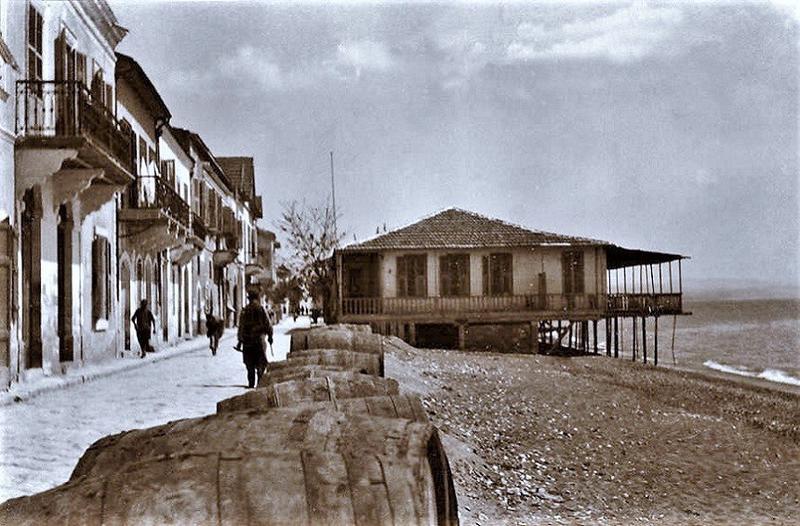
In the late 19th and early 20th century, Limassol resembled more to a village than a city. In particular, the image of the seafront was completely different, without the large pedestrian street, the parks and the tidy wooden docks. It was then, however, when the first signs that the city would become the cosmopolitan destination of the 21st century, began to appear.
The first impressive buildings were erected after the arrival of the British, in 1878. In 1879 at the site of a small fort at the beach, the city Government House, which would be later turned into the customs' office, was built. The construction of the large dock also started at the same time.A little later, in 1882, “Aktaion” made its appearance close to the Limassol harbour, when a captain decided to stay ashore, but without missing the daily sight of the sea. Captain Nicolas Lambis eventually died, but his place would still be part of the city’s life, thanks to Zenon Skyrianides, Antonis Chatjipavlos and Theodoros Mavros, who was the one who named it “Aktaion”.
Heracles Skyrianides was the owner of the seaside "Bar Skyrianide", which also appeared in the last decades of the 19th century. It was one of the first places that offered coffee, drinks and leisure with a view at the city's sea. The bar with the balcony that hovered over the water, next to the balcony of "Akteon", was later, in the beginning of the 20th century, renamed "Atheneon". Both of these bars had a stage for concerts and theatrical performancers, hosting well known bands and artists, which was a fashionable option for the entertainment of high society back then.
While in the late 19th century, the city had about 6000 residents, the population of Limassol in 1911 was over 10000 souls and its image had changed significantly. With the first renewal works on the promenade during the 1930s and the installation of electric lighting, Limassol started giving the first signs of the city it was about to become.
Source: Limassol Historical Archives, Demetris Theodorou, Tasos Andreou
* NOTE: The tributes of the Project "History of Limassol" present information that has emerged from historical research thus far. Any new data is embedded into the tributes, once it has been confirmed.